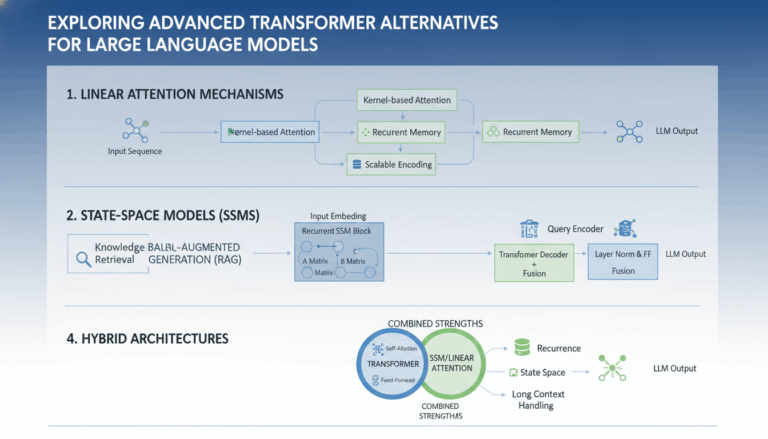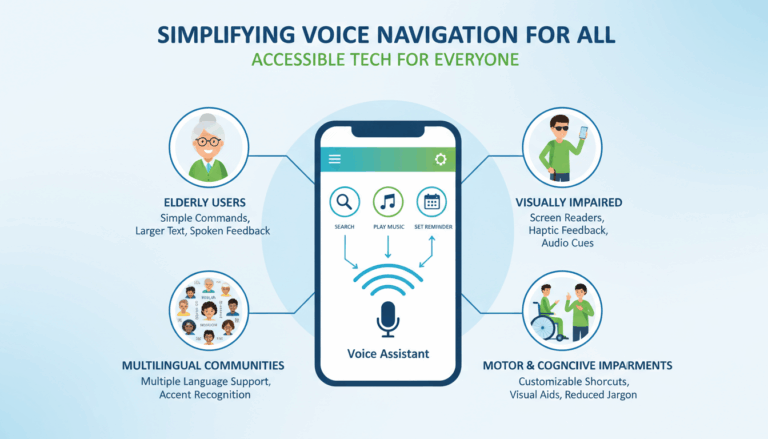Introduction to Databases: SQL and NoSQL
Databases are integral to software applications, serving as repositories of vital data that underpins functionalities ranging from user authentication to complex analytics. Understanding both SQL and NoSQL databases is crucial for developers and data architects seeking to design systems that efficiently manage data storage and retrieval.
SQL (Structured Query Language) Databases
SQL databases are synonymous with relational databases, which organize data into tables with rows and columns. This structure leans heavily towards consistency, ensuring that data adheres to the ACID (Atomicity, Consistency, Isolation, Durability) properties. These properties are designed to guarantee transactional reliability even in cases of hardware failures or concurrent data modifications.
For instance, consider a user management system at a tech company. An SQL database would store user data in separate tables such as Users, Roles, and Permissions, each linked by foreign keys. A query to retrieve all active administrators could join these tables to provide a comprehensive view. SQL provides a robust framework through its comprehensive query language that includes features for filtering, aggregating, and joining data, making it ideal for complex queries.
NoSQL (Not Only SQL) Databases
In contrast, NoSQL databases cover a wide range of database technologies designed for specific data storage and retrieval needs that go beyond the limitations of traditional SQL systems. They offer flexibility in data models, such as document, key-value, column-family, and graph formats, allowing for a broader range of use cases.
For example, in a social media application where users post updates, a NoSQL document store like MongoDB manages each post as a JSON document—self-contained and variable in structure. This capability supports rapid development and scalability, as developers can easily modify the document structure without a schema migration process. Additionally, NoSQL databases prioritize AP (Availability and Partition tolerance) in the CAP theorem, making them more amenable to distributed systems.
The selection between SQL and NoSQL databases often hinges on the specific needs of a project. SQL is optimal for scenarios demanding strict transactional guarantees and structured data. Conversely, NoSQL is preferable in environments that require horizontal scaling and rapid iteration, such as handling massive volumes of unstructured data or supporting real-time analytics. An organization might use SQL databases for financial ledgering while employing NoSQL databases for web applications that track user interactions in real time.
Ultimately, the decision on which type of database to use should consider factors such as data structure, scale, and the development focus of the project. As technology and architectural needs evolve, understanding the strengths and limitations of SQL and NoSQL databases empowers developers to make informed decisions poised for future growth.
Key Differences Between SQL and NoSQL Databases
In the realm of database technologies, understanding the distinctions between SQL and NoSQL databases can greatly influence the success of a project. Identifying the key differences between these two paradigms allows developers to tailor database solutions to their specific needs, enhancing both performance and scalability.
SQL databases are primarily used for structured data storage and management. They require a defined schema, meaning that the structure of the data—such as tables, columns, and data types—must be established upfront. This rigid structure supports complex querying capabilities through SQL (Structured Query Language), making it ideal for scenarios where multi-table operations and intricate data relationships are critical. For example, in a hospital management system, patient records, appointments, and treatments might reside in different but interconnected tables, facilitating comprehensive reporting and data integrity through foreign key constraints.
Furthermore, SQL databases adhere to ACID properties, ensuring reliable and consistent transactions. This is crucial in environments where data integrity and rollback capabilities are essential, such as financial transactions or inventory systems where maintaining accurate counts is vital. Consider an e-commerce platform that uses an SQL database to handle transactions: if a transaction fails mid-process, the database’s ACID compliance ensures that either all operations complete successfully or none at all, avoiding any orphaned states.
Conversely, NoSQL databases prioritize flexibility and scalability, often opting for relaxed consistency in favor of distributed architecture. They do not require predefined schemas, enabling developers to store varied and dynamic data formats effortlessly. This schema-less nature is particularly advantageous in rapidly evolving environments, like social media applications, where user-generated content varies greatly and the ability to iterate quickly is critical.
NoSQL databases encompass various types, each suited to particular use cases. Document stores, such as MongoDB, are designed for hierarchical data, supporting JSON or BSON formats that allow for easy nesting of information. Key-value stores, like Redis, excel in caching and session storage applications due to their simplicity and efficiency. Column-family databases, such as Cassandra, are ideal for handling large volumes of data across many servers, supporting distributed data storage with ease. Lastly, graph databases, like Neo4j, manage relationships efficiently, suitable for applications requiring complex data interconnections, such as recommendation engines or social networks.
Moreover, NoSQL databases are adept at handling large-scale, real-time applications thanks to their support for horizontal scaling. Instead of scaling up by adding costly hardware resources, they allow distribution across multiple servers, facilitating capacity expansion without significant downtime. This is particularly important in big data contexts where data inflow can be unpredictable and substantial, such as log analysis or IoT data ingestion.
Choosing between SQL and NoSQL databases demands a thorough understanding of your project requirements. SQL is preferable when a project involves complex transactional data, requires strong consistency, and benefits from a relational model. On the other hand, NoSQL is more favorable for greenfield projects needing quick development cycles and scalability, especially when dealing with unstructured or semi-structured data or when the application requires a rapid adjustment to variable loads.
Use Cases and Applications of SQL Databases
SQL databases are renowned for their versatility and ability to handle complex queries and transactions, making them indispensable across a spectrum of industries and applications. Their structured nature, which involves predefined schemas and adherence to ACID properties, positions them as fundamental tools in environments where data accuracy, reliability, and relational checks are paramount.
In the realm of financial services, SQL databases are essential due to their robustness in handling transactions. Banks and financial institutions use SQL databases to manage customer accounts, process transactions, and maintain the integrity of large volumes of financial data. For instance, an SQL database can efficiently handle the atomicity required in a banking transaction where funds are transferred from one account to another. This ensures that all changes are committed only if the entire transaction is successful, thereby maintaining balance correctness and preventing any data inconsistencies.
Healthcare systems also benefit heavily from SQL databases. Patient records, medication histories, and treatment plans are stored within relational databases to ensure data integrity and accessibility. For example, consider a hospital management system where patient information is stored in separate tables for demographics, medical history, appointment schedules, and billing. Using SQL queries, these tables can be joined to generate comprehensive reports that assist healthcare providers in making informed decisions. Furthermore, SQL is used to enforce data privacy regulations by controlling access to sensitive medical data, essential in maintaining compliance with laws such as HIPAA in the United States.
In the e-commerce sector, SQL databases are leveraged to handle product inventories, order management, and customer information. An online retailer might use SQL to track inventory levels across various warehouses, ensuring that stock data is accurately reflected on their website. This involves complex queries that update the stock levels each time a purchase is made, ensuring real-time availability for customers. Additionally, by analyzing customer purchase history stored in SQL databases, businesses can generate personalized marketing strategies and recommendations, enhancing the shopping experience and increasing sales.
Enterprise Resource Planning (ERP) systems utilize SQL databases to integrate and manage core business processes. By storing data related to accounting, procurement, project management, and supply chain operations, SQL databases facilitate seamless data flow across departments. For example, an ERP system might use SQL queries to pull sales data and match it with inventory levels, aiding in demand forecasting and resource allocation.
Educational institutions implement SQL databases for managing student information systems. These databases store data about student enrollments, grades, and course schedules. Administrative staff can efficiently use SQL to generate transcripts, adjust class rosters, and handle billing processes. By preserving data integrity and enabling swift access to essential records, SQL databases support the operational efficiency of educational facilities.
In conclusion, SQL databases play a pivotal role across various sectors by providing a reliable, structured, and scalable means of handling data. Their ability to enforce data consistency, guarantee transactional integrity, and support complex queries makes them invaluable in scenarios demanding precision and dependability. Whether in finance, healthcare, retail, enterprise management, or education, SQL databases are integral to managing large-scale relational data effectively.
Use Cases and Applications of NoSQL Databases
NoSQL databases have emerged as versatile tools capable of meeting the demands of modern applications across diverse industries. Their ability to handle unstructured and semi-structured data with ease, along with flexibility in schema design, makes them suitable for scenarios where traditional SQL databases might falter.
NoSQL databases are particularly adept in environments where high availability and scalability are crucial, such as web applications and social media platforms. For instance, social media giants like Facebook and Twitter leverage NoSQL databases to store user-generated content, such as posts, comments, and likes. These platforms deal with massive inflows of data, and the schema-less nature of NoSQL databases like Cassandra or MongoDB allows them to adapt quickly to changes in data structures without downtime or complex migrations.
In the realm of big data analytics, NoSQL databases excel at processing vast amounts of semi-structured data gathered from various sources such as logs, sensors, and online transactions. Companies often use NoSQL databases like Apache Cassandra or HBase to support real-time analytics, providing insights into consumer behavior or operational efficiency. For instance, as part of an IoT deployment, a firm might collect data from thousands of smart devices. This data can be voluminous and varied; using a column-family store like Cassandra, the firm can achieve efficient data ingestion and high-speed querying across distributed nodes.
E-commerce platforms also benefit significantly from NoSQL databases. Retail giants like Amazon use key-value stores and document databases to track millions of products and user interactions. These databases can manage dynamic pricing, real-time inventory updates, and personalized recommendations, adapting to high transaction volumes with minimal latency. For example, when a customer searches for a product, a NoSQL system can quickly aggregate real-time data like availability, price changes, and tailored offers based on the user’s browsing history.
In gaming, NoSQL databases are critical for handling high-speed data requirements and providing seamless user experiences. Games like Fortnite and PUBG need to manage concurrent user data, including player statistics, achievements, and real-time game state across millions of users. Utilizing a distributed NoSQL database ensures the low-latency performance necessary for player engagement and game state accuracy.
Moreover, content management systems and media companies use document-oriented databases to store and retrieve multimedia content effectively. Consider a media streaming service like Netflix, which must manage and serve vast libraries of video content. A NoSQL document database can efficiently store metadata and indexing information, enabling swift retrieval and playback. Furthermore, Netflix can leverage this flexibility to analyze viewing patterns and optimize content delivery, enhancing user satisfaction.
Finally, healthcare applications benefit from NoSQL databases’ ability to store complex and diverse data types. Patient records, medical imaging, and real-time monitoring data from wearable devices all require a flexible storage solution. Implementing a graph database allows for efficient relations management between patients and medical records, supporting quick access and comprehensive insights in patient care scenarios.
NoSQL databases provide a powerful alternative for businesses seeking scalable and flexible solutions to meet varied data challenges. Their applications span industries, demonstrating remarkable adaptability to the needs of modern data-driven enterprises.
Factors to Consider When Choosing Between SQL and NoSQL
When considering whether to choose SQL or NoSQL databases for a project, several critical factors must be evaluated to ensure that the choice aligns with the specific needs and goals of your application.
Data Structure Requirements
Understanding the structure of your data is fundamental in deciding between SQL and NoSQL. SQL databases require a fixed schema, making them suitable for structured data needs. This schema rigidity is perfect for applications where precise data relationships and structures are necessary, such as CRM systems where customer information is interrelated and stored in comprehensive tables. In contrast, NoSQL databases offer flexibility with their schema-less design, accommodating a variety of data structures, from simple to complex nested ones like JSON. This makes them ideal for applications with evolving data formats, such as user-generated content on social media platforms.
Scalability Needs
The ability to scale an application efficiently is another pivotal consideration. SQL databases traditionally scale vertically, requiring more powerful hardware for performance improvement, which can be costly and complex. However, NoSQL databases are built with horizontal scaling capabilities, allowing them to spread out across multiple servers or nodes efficiently. This makes NoSQL a better choice for applications expecting rapid growth or dealing with massive amounts of data, like IoT applications that ingest continuous data streams from numerous devices.
Transactional Integrity
For applications where transactional integrity is crucial, SQL databases are often the go-to option due to their support for ACID properties. This ensures reliable transactions and consistency, crucial for applications in banking and e-commerce, where accurate transactions are paramount. On the other hand, NoSQL databases generally favor eventual consistency, which may be more suitable for applications where speed is prioritized over transaction precision, such as caching layers or real-time messaging apps.
Query Complexity
The complexity of queries your application will need to perform can sway the database choice. SQL databases provide powerful querying capabilities, allowing for complex operations such as joins and aggregations. This makes them suited for business intelligence applications that require detailed analytics and reporting. Conversely, if your application mainly requires simple key-value lookups or document retrievals, a NoSQL database can offer the required simplicity and speed.
Development Flexibility
Consider the flexibility and speed of development. NoSQL databases often provide quicker iteration cycles for development, as they do not require predefined schemas. This aspect is advantageous for startups and dynamic environments where product features need rapid adjustment and deployment. SQL databases, with their rigid structure, might slow down development due to necessary schema adjustments for feature changes, making NoSQL a better fit for agile development environments.
Data Model Complexity
The complexity of the data model is another essential factor. SQL databases excel in handling complex multi-table relationships with ease, leveraging foreign keys and joins for robust data association. This is ideal for applications like enterprise resource planning systems, which require intricate data management. In contrast, NoSQL databases shine in applications where the relationships are less complex or can be managed in a hierarchical or document-based format, such as content management systems.
Cost Considerations
Cost is a practical consideration, where both hardware and personnel expenses must be evaluated. SQL databases might incur higher costs due to the need for powerful hardware and sophisticated resources to maintain complex schemas and manage data consistency. Alternatively, NoSQL options might lower infrastructure costs by leveraging cloud deployment’s horizontal scaling benefits, reducing the cost-per-query basis significantly.
By carefully analyzing these factors, decision-makers can choose the right database that will complement the unique requirements of their projects, balancing functionality, cost, scalability, and development needs effectively.




